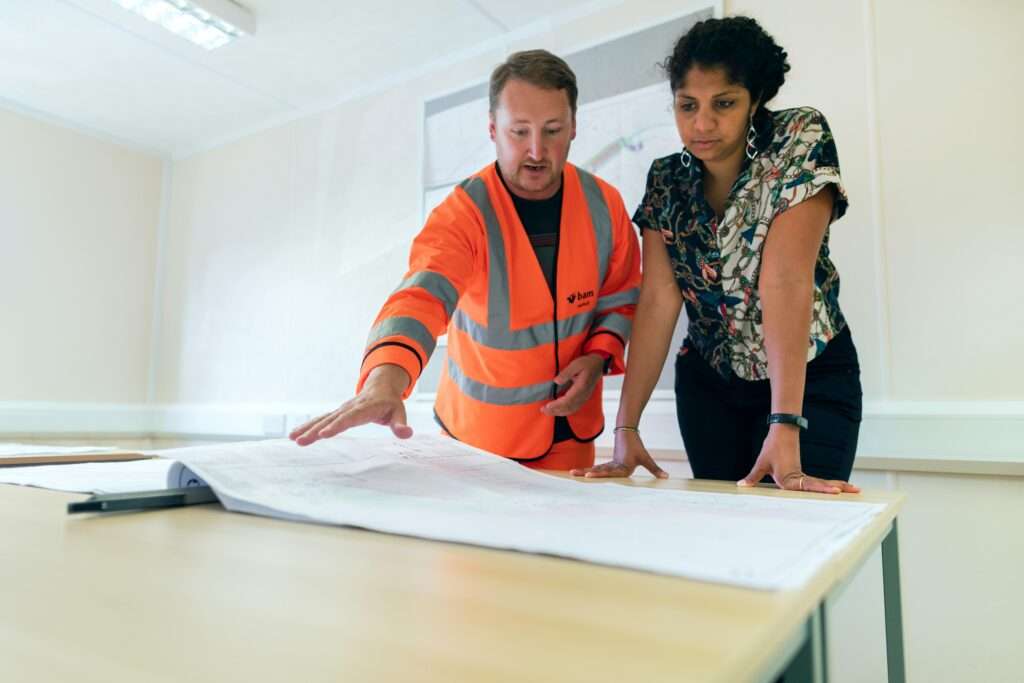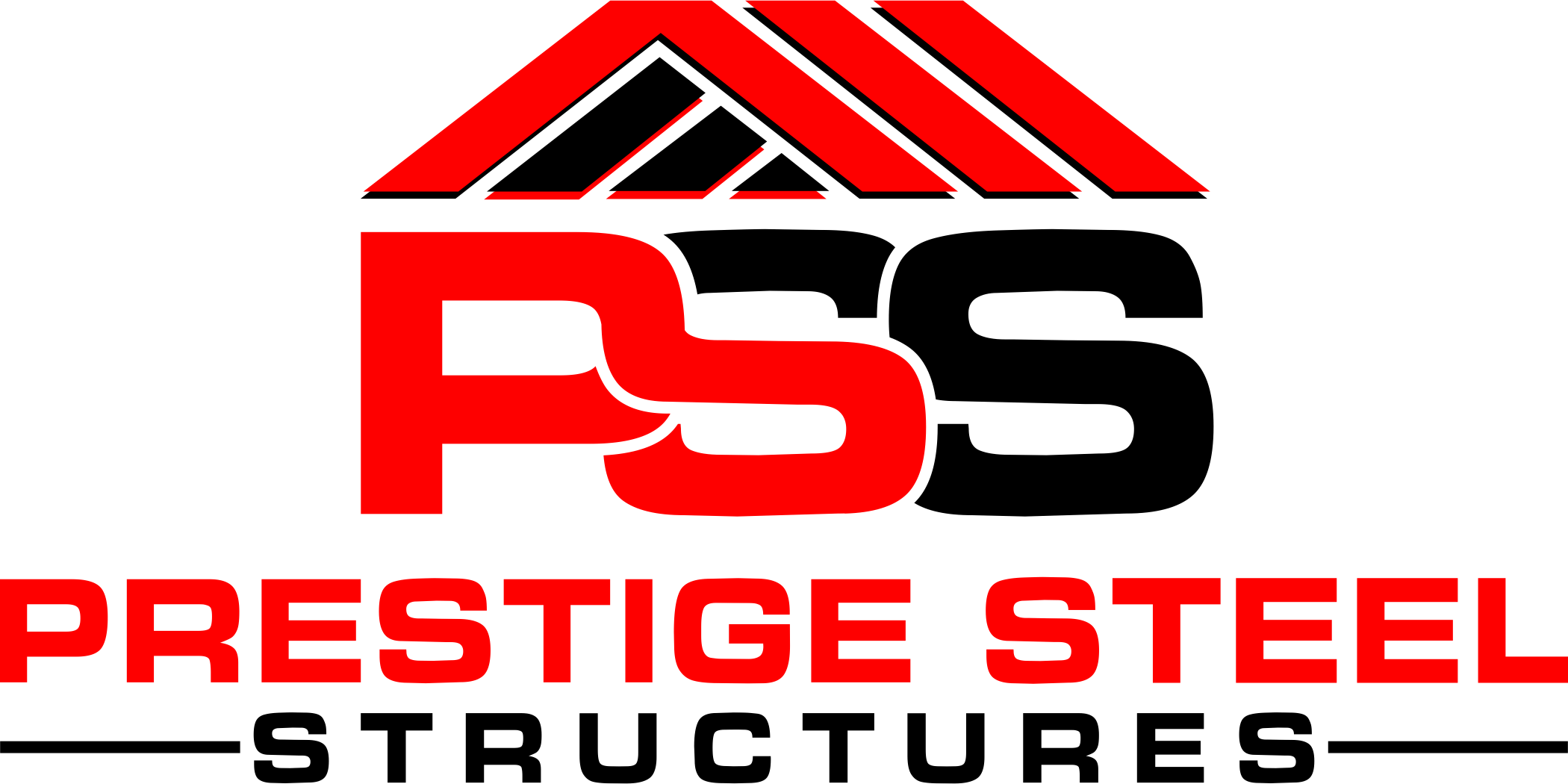Metal buildings are a popular choice for a reason. They’re durable, versatile, and often more cost-effective than traditional wood-framed structures. But let’s face it, even the most affordable metal building can represent a significant investment. The good news is, you don’t have to wait until you’ve saved up a lump sum to get started on your dream project. Financing your metal building is a viable option, opening doors for workshops, storage facilities, agricultural buildings, and more. This comprehensive guide will equip you with the knowledge to navigate the world of metal building financing.

Financing Avenues: Unveiling the Key to Your Metal Building Dream
Gone are the days of waiting to build your dream metal structure due to upfront costs. With a variety of financing options available, you can unlock the potential of a metal building now, whether you need a workshop, storage facility, agricultural building, or something else entirely. This section empowers you to navigate the exciting world of metal building financing and find the perfect fit for your specific needs.
Traditional Loan Options: Building a Foundation with Established Lenders
- Construction Loan: Considered the gold standard for financing building projects, construction loans are offered by banks and credit unions. These loans are specifically designed to cover the costs associated with construction, from materials to labor. Here’s a closer look:
- Interest Rates: Construction loans can come with either fixed or adjustable interest rates (ARM). Fixed rates offer predictability, while ARMs might start lower but have the potential to fluctuate over the loan term.
- Loan Term: Construction loans typically have shorter terms than traditional mortgages, typically ranging from 6 months to 2 years. This aligns with the expected construction timeframe for your metal building.
- Requirements: Be prepared to provide detailed documentation including project plans, budgets, contractor bids, and proof of property ownership. Strong creditworthiness is also essential to qualify for favorable loan terms.
- Home Equity Loan/Line of Credit: If you own a home with sufficient equity, leveraging its value through a home equity loan or line of credit (HELOC) can be an attractive option. These loans offer competitive interest rates compared to construction loans, but come with the inherent risk of using your home as collateral.
- Home Equity Loan: Provides a lump sum of cash upfront, which you then repay with interest over a fixed term. This option is suitable for projects with a well-defined budget.
- Home Equity Line of Credit (HELOC): Functions similarly to a credit card, offering a revolving line of credit up to a certain limit. Interest is only charged on the amount you use. This flexibility can be beneficial for projects with unforeseen expenses.
Seller Financing: Convenience with Caveats
Many metal building suppliers offer in-house financing programs, providing a convenient one-stop shop for both your building and its financing. These programs can be particularly attractive for smaller projects or for those seeking specialized financing options tailored to metal buildings. However, it’s crucial to carefully scrutinize the terms before committing:
- Interest Rates: Seller financing may have higher interest rates compared to traditional loans. Compare rates from multiple suppliers to ensure you’re getting a competitive offer.
- Down Payment Requirements: Down payment requirements can vary significantly with seller financing. Be prepared to put down a larger percentage of the total cost upfront.
- Loan Term: Seller financing typically comes with shorter loan terms compared to traditional loans. Ensure the repayment schedule aligns with your financial capabilities.
Direct Lenders: Catering to Niche Needs
Direct lenders specialize in financing non-traditional structures, including metal buildings. They can be a good option for individuals with less-than-perfect credit who might struggle to qualify for traditional loans. However, be aware of the potential downsides:
- Higher Interest Rates: Direct lenders often charge higher interest rates to compensate for the perceived risk of financing non-traditional structures.
- Loan Products: The loan products offered by direct lenders might be less flexible compared to traditional lenders. Carefully assess the terms to ensure they align with your project needs.
- Reputation and Reviews: It’s crucial to thoroughly research the reputation and reviews of any direct lender before entering into a financing agreement.
Government Programs: A Potential Lifeline (Limited Availability)
For those involved in agriculture, there are limited government programs that offer financing options for agricultural buildings in rural areas. However, eligibility requirements and property location restrictions are often stringent. Here’s an example:
- USDA Farm Service Agency (FSA): The FSA offers loan and grant programs to support agricultural businesses, including funding for certain types of agricultural buildings. Programs like the Guaranteed Loan Program or the Agricultural Property Loan might be worth exploring if your project meets the eligibility criteria.
Remember, government programs typically have lengthy application processes and funding limitations. It’s best to research these options early on and factor in the potential wait times.

Choosing the Right Option: Navigating the Maze of Metal Building Financing
With a comprehensive understanding of the financing landscape laid out, it’s time to delve deeper into the factors that will guide you towards the most suitable financing option for your metal building project. Carefully consider these key elements before making your final decision:
Interest Rates: Fixed vs. Adjustable – A Balancing Act
- Fixed Interest Rates: Offer predictability and stability throughout the loan term. Your monthly payment remains constant, regardless of market fluctuations. This is ideal for those who prioritize budgeting certainty and dislike the potential for unexpected interest rate hikes.
- Adjustable Interest Rates (ARM): May start lower than fixed rates, potentially making them attractive for short-term projects. However, the interest rate can adjust periodically based on a pre-determined index, leading to potentially higher monthly payments in the future. This option carries more risk but can be beneficial if you plan to pay off the loan quickly before significant interest rate adjustments occur.
Loan Term: Striking a Balance Between Affordability and Speed
- Loan Term Length: The duration over which you repay the loan. A longer term translates to lower monthly payments, making the loan more affordable in the short term. However, the total interest paid over the life of the loan will be higher.
- Project Timeline: Consider your project timeline when choosing a loan term. For shorter construction projects, a shorter loan term might be ideal, even if it means slightly higher monthly payments. This minimizes the overall interest expense.
- Financial Capacity: Be realistic about your current and future financial situation. While a longer term offers lower monthly payments, ensure you can comfortably afford them over the extended timeframe.
Down Payment: Lowering Your Loan Burden
- Down Payment Amount: The upfront payment you make towards the total cost of the project before financing kicks in. A larger down payment reduces the loan amount you need to borrow, consequently lowering your monthly payments and total interest paid over the loan term.
- Impact on Loan Terms: A larger down payment can improve your loan application’s attractiveness to lenders. This may translate to lower interest rates and potentially more favorable loan terms.
- Financial Flexibility: Balance the benefits of a larger down payment with maintaining a healthy financial cushion for unexpected expenses or project contingencies.
Prepayment Penalties: The Flexibility Factor
- Prepayment Clause: Some loans come with prepayment penalties, which are fees charged if you pay off the loan early. This discourages lenders from losing out on the anticipated interest income.
- Early Repayment Plans: If you anticipate having the financial means to pay off the loan early, prioritize finding a financing option with no prepayment penalty. This provides financial flexibility and allows you to save money on long-term interest costs.
- Negotiation Potential: In some cases, depending on the lender and your overall loan package, there might be room to negotiate a lower or waived prepayment penalty.
Credit Score: The Gatekeeper of Favorable Rates
- Creditworthiness: Your credit score plays a significant role in determining the interest rates and loan terms you qualify for. A higher credit score signifies financial responsibility and makes you a more attractive borrower to lenders, leading to potentially lower interest rates and better loan terms.
- Credit Report Review: Before applying for any financing, thoroughly review your credit report for any errors or inaccuracies. Correcting any mistakes can improve your credit score and potentially unlock better loan options.
- Credit Score Improvement Strategies: If your credit score needs a boost, consider implementing strategies like paying off existing debts, maintaining a low credit utilization ratio, and avoiding taking on additional credit before applying for your metal building loan.
Beyond the Basics: Additional Considerations for a Smooth Journey
- Shop Around: Don’t settle for the first financing offer you receive. Compare rates, terms, and down payment requirements from multiple lenders, including banks, credit unions, metal building suppliers, and direct lenders.
- Read the Fine Print: Before signing any loan agreement, meticulously review the fine print. Understand all associated fees, prepayment penalties, and early payoff clauses.
- Factor in Ongoing Costs: While the loan itself is crucial, remember to factor in the ongoing costs of owning a metal building. This includes property taxes, insurance premiums, and potential maintenance expenses.

Understanding Your Needs: A Blueprint for Your Metal Building Project
Before venturing into the exciting world of metal building financing, it’s crucial to meticulously define your project. This initial planning stage lays the groundwork for a smooth financing process and ensures your metal building meets your specific needs. Here’s a deep dive into the key questions you should ask yourself:
Purpose: Unveiling the Heart of Your Project
The fundamental question – what will your metal building be used for? This seemingly simple question dictates a multitude of factors, shaping the size, complexity, and ultimately, the cost of your project. Here are some common purposes to consider, each with its own set of requirements:
- Workshop/Garage: Imagine tinkering on classic cars, pursuing woodworking hobbies, or having a dedicated space for power tools. Workshop size will depend on the number and size of vehicles you plan to store, as well as the amount of workspace needed for your hobbies. Consider features like overhead doors, ample lighting, and designated areas for workstations.
- Storage Facility: Do you need a secure space for business inventory, seasonal equipment, or personal belongings? Storage needs translate directly to square footage. Think about the type of items you’ll be storing – bulky machinery, delicate furniture, or temperature-sensitive materials. This may influence ventilation requirements, insulation options, and even door size for easy loading and unloading.
- Agricultural Building: Whether you’re raising livestock, storing hay, or requiring a dedicated space for farm equipment, your metal building needs careful consideration. Animal housing requires specific ventilation systems and considerations for animal waste management. Hay storage necessitates proper insulation and moisture control to prevent spoilage. Farm equipment storage might require wider doors and higher clearances for larger machinery.
- Commercial Building: Metal buildings can be surprisingly versatile for commercial applications. From retail stores to offices, the key is understanding your specific business needs. Retail might require a more open floor plan with large window displays, while an office might prioritize dedicated work areas and soundproofing. Zoning regulations and accessibility requirements also play a crucial role in determining the design and functionality of your commercial metal building.
Demystifying Dimensions: Square Footage and Functionality
Once you’ve identified your purpose, it’s time to translate that vision into concrete dimensions. Here’s where square footage comes into play. Take some time to measure the equipment, vehicles, or materials you plan to store or house in your metal building. Don’t forget to factor in additional space for maneuverability, workbenches, or animal welfare considerations.
Here are some additional details to consider when defining your dimensions:
- Ceiling Height: Will you need ample space for tall equipment, overhead cranes, or hay storage? Higher ceilings come at an additional cost, so ensure it aligns with your specific needs.
- Clear Span: This refers to the distance between supporting columns within the building. A wider clear span offers more flexibility in layout but may require additional structural support, impacting the overall cost.
- Bay Size: Metal buildings are typically constructed in bays, which are modular sections defined by the spacing between columns. Standard bay sizes range from 10′ to 30′, with wider bays requiring more robust support structures.
Site Preparation: Unearthing Potential Costs
The land where your metal building will reside plays a crucial role in the overall project cost. Before securing financing, assess your existing site and consider potential groundwork or foundation needs:
- Grading: Is the land level, or will it require grading to ensure a stable foundation? Significant grading can add unexpected costs to your project.
- Soil Conditions: Conduct a soil test to determine the load-bearing capacity of the ground. Soft or unstable soil might necessitate a more robust foundation, impacting the final cost.
- Utilities: Will your metal building require access to electricity, plumbing, or other utilities? Factor in the cost of extending existing lines or installing new ones.
- Existing Structures: Are there any trees, fences, or other structures that need to be removed to make way for your building? Demolition or removal costs should be factored into the budget.
Permits and Inspections: Navigating the Regulatory Landscape
Building permits and inspections are crucial steps to ensure the safety and code compliance of your metal building. Don’t underestimate the importance of understanding your local regulations:
- Contact your local building department: Obtain information on specific permits required for your project based on size, purpose, and location. Fees associated with permits can vary, so factor this into your budget.
- Understand inspection timelines: Building inspections occur at various stages of construction to ensure adherence to building codes. Being aware of these timelines helps maintain a smooth construction flow.
- Plan for potential revisions: The permitting process may involve revisions to your building plans to comply with local codes. Be prepared for the possibility of needing to adjust your design or materials slightly, and factor in any additional engineering or permit resubmission fees.
- Homeowner Association (HOA) Regulations: If your property falls under an HOA, there might be additional design restrictions or approval processes specific to the community. Consult your HOA guidelines before finalizing your plans.

Building Your Dream: Transforming Vision into Reality
With a clear understanding of your project needs and the financing landscape, you’re now equipped to turn your metal building dream into a reality. Here are some key steps to ensure a smooth and successful journey:
Develop a Solid Budget: Leaving No Stone Unturned
Before diving into the loan application process, meticulously crafting a comprehensive budget is crucial. This master plan will provide a clear picture of your project’s financial feasibility and guide your financing decisions. Here’s what to include:
- Metal Building Cost: Obtain quotes from multiple metal building suppliers, factoring in the cost of materials, desired features, size, and any additional customizations.
- Financing Costs: Estimate the interest rate, loan term, and any associated fees based on your chosen financing option. Utilize online loan calculators or consult with lenders to get a realistic picture of your monthly payments.
- Site Preparation: Factor in the potential costs associated with groundwork, foundation work, utility extensions, or demolition of existing structures on your building site.
- Permits and Inspections: Research the permit fees and estimated inspection costs associated with your local building department.
- Ongoing Expenses: Don’t forget to account for property taxes, insurance premiums, and any anticipated maintenance costs for your metal building.
By creating a detailed budget that incorporates all these elements, you’ll be able to confidently determine the loan amount you need and ensure your project stays within your financial boundaries.
Partnering with the Right People: Choosing a Reputable Metal Building Supplier
Selecting the right metal building supplier is a vital decision. Look for a company with a strong track record, a commitment to quality construction, and ideally, experience in facilitating financing solutions for their customers. Here are some key criteria to consider:
- Experience and Reputation: Research the company’s history, customer reviews, and industry certifications. Opt for a supplier with a proven track record of delivering high-quality metal buildings.
- Product Variety and Customization Options: Ensure the supplier offers a wide range of metal building styles, sizes, and features to perfectly match your specific needs. Explore customization options to tailor the building to your exact functionality requirements.
- Financing Expertise: Seek a supplier with experience in working with various financing options. Some reputable suppliers might even offer their own in-house financing programs, potentially streamlining the process.
- Communication and Customer Service: Choose a supplier that prioritizes clear communication and exceptional customer service. Look for a company that will be readily available to answer your questions, address concerns, and guide you through the entire process.
Building a strong relationship with a reliable metal building supplier is crucial for the success of your project. Partnering with the right company ensures you get the best value for your investment and receive the necessary support throughout the construction process.
Prepare Documentation: Streamlining the Loan Application Process
Once you’ve finalized your project budget and chosen a supplier, gather the necessary documentation to streamline your loan application process. Having everything organized upfront will expedite loan approval and minimize delays. Here are some key documents to compile:
- Personal Financial Statements: This typically includes proof of income, such as recent pay stubs or tax returns, and a detailed breakdown of your assets and liabilities.
- Project Plans and Specifications: Provide detailed plans outlining the dimensions, features, and materials of your desired metal building.
- Building Permits and Approvals: Include copies of any permits or approvals obtained from your local building department.
- Supplier Quotation: Attach a formal quote from your chosen metal building supplier, outlining the total project cost and breakdown of materials and labor.
Conclusion
Equipping yourself with the knowledge to navigate metal building financing unlocks a world of possibilities. By meticulously defining your project’s purpose, dimensions, and site requirements, you lay the groundwork for a successful financing application. From traditional loans like construction loans and home equity lines of credit to seller financing and government programs for agricultural structures, there’s a financing option to suit most needs.
Carefully consider factors like interest rates, loan terms, down payment requirements, and prepayment penalties when making your choice. Don’t hesitate to shop around and compare offers from multiple lenders to secure the most favorable terms. Remember, financing goes beyond the loan itself. Factor in ongoing costs like property taxes, insurance, and maintenance to ensure your budget accurately reflects the total project investment.
With a solid budget, a reputable metal building supplier by your side, and the necessary documentation prepared, you’re well on your way to transforming your metal building dream into a reality. So don’t wait – unlock the potential of financing and start building your steel sanctuary today.


